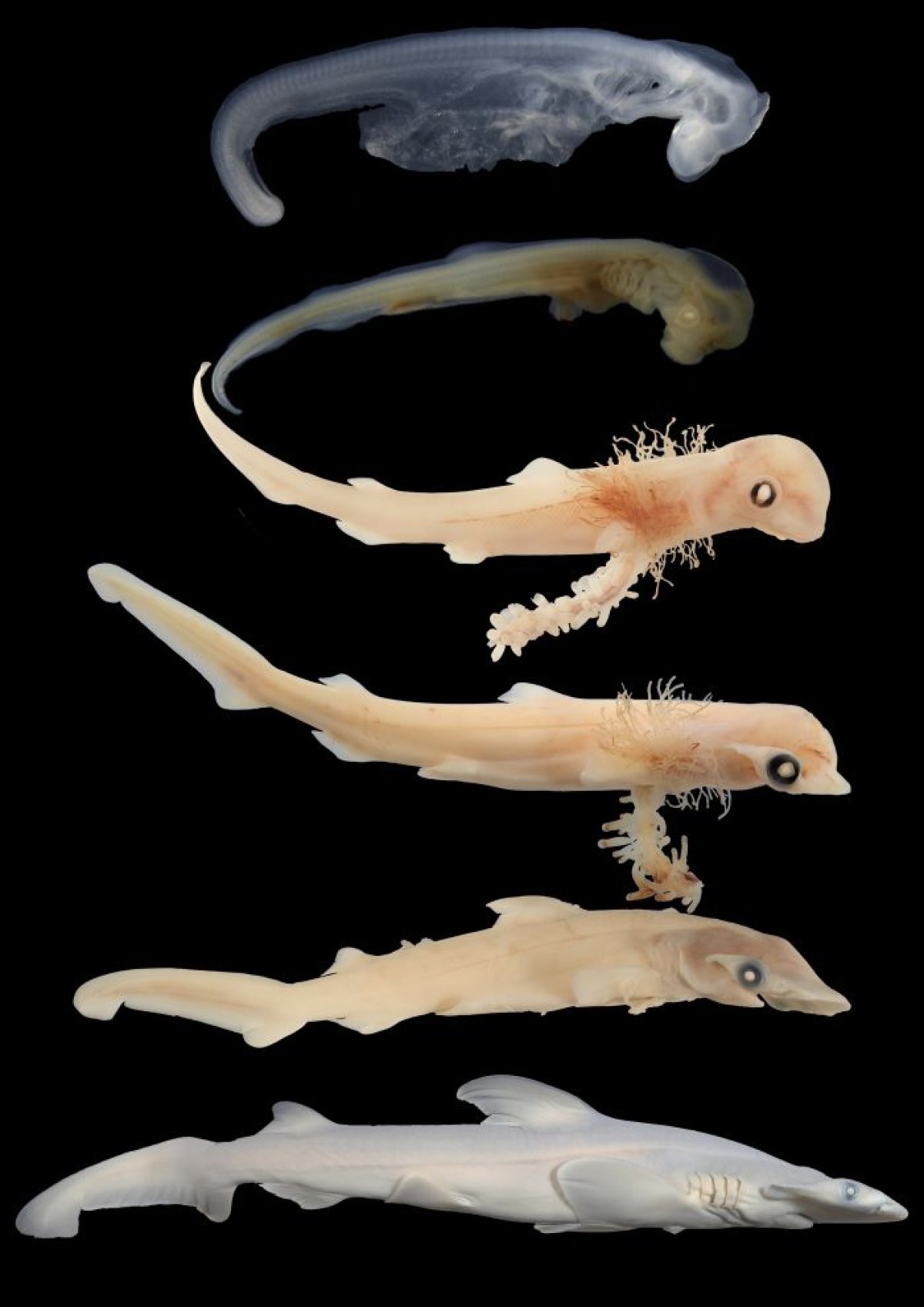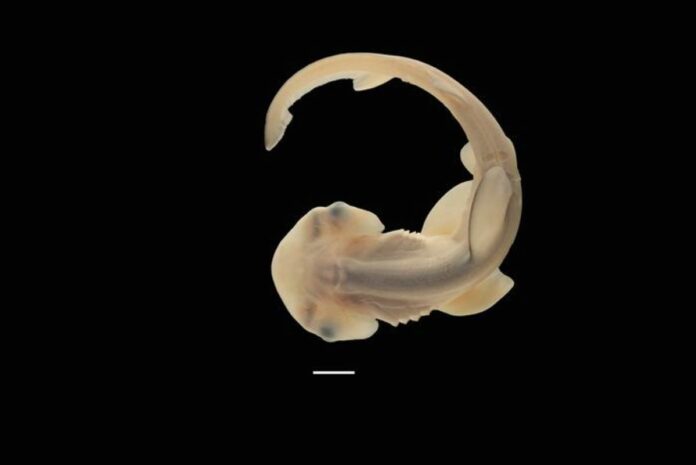Secrets of the hammerhead shark have been revealed in images studied by scientists, who are now one step closer to discovering how the species got its unique appearance.
University of Florida scientists gained access to an extremely rare hammerhead shark embryo, that showed the species in its five-month development.
A series of pictures reveal how the hammerhead starts to widen halfway through the sharks’ gestation period. Scientists found that the shark’s skull pushes out its eyes at seemingly unnatural angles before the front of the hammer eventually rounds out.
The findings were published in the journal Developmental Dynamics in September 2023, and are featured in this March’s issue. In addition, Gareth Fraser, a University of Florida biology professor who supervised the study, recently published an article in The Conversation that details the discovery.
“Access to a hammerhead embryo is very rare, which is what makes this image so special,” Fraser wrote in The Conversation.
Gareth Fraser
In a statement, Fraser also said: “This is a look at how monsters form. This is an insight into the development of a wonder of nature that we haven’t seen before and may not be able to see again.”
It is also the first detailed look at a hammerhead embryo. Because such embryos are rarely obtained, this research was a once in a lifetime opportunity for scientists. Shark samples are already very difficult to come by, and hammerhead sharks are a particularly elusive species.
While most fish species lay eggs, which are more easily obtained, hammerheads give birth to live young, which means specimens are not so easily collected. They are also a vulnerable species, so there are rules against obtaining them for research.

Gareth Fraser
These rare embryos were found in a bonnethead shark, the smallest of the hammerhead species, caught during other studies.
The ancestors of hammerhead sharks appeared on Earth around 20 million years ago. Over time, evolution saw it split into different species, with some getting smaller and its hammerhead changing in shape and size.
There is still much to learn about the species, and such a close look at their embryos may never happen again.
“It’s the perfect qualities of the bonnethead that allowed us [to] do it with this species,” graduate student Steven Byrum, who worked on the study, said in the statement. “This was a unique opportunity we may not be able to get for very much longer with bonnetheads and may not be able to get in any other species of hammerhead.”
The peculiar shape of the hammerhead’s skull head sets it apart from other species in hunting skill, navigation ability and swimming efficiency. With their eyes positioned out to the side, they have 360-degree vision and perception, both in the front and behind.
“Access to these amazing shark pup embryos allows us to compare their development with other regular-headed sharks and ask how and why hammerheads grow these wonderful noggins,” Fraser wrote in The Conversation.
“The ocean hides a wealth of weird and wonderful fishes, most of which are inaccessible, and studies of their development are impossible,” he continued. “My lab continues to uncover insights into the evolution of life on Earth thanks to these fortuitous opportunities.”
Do you have a tip on a science story that Newsweek should be covering? Do you have a question about hammerhead sharks? Let us know via [email protected].
Uncommon Knowledge
Newsweek is committed to challenging conventional wisdom and finding connections in the search for common ground.
Newsweek is committed to challenging conventional wisdom and finding connections in the search for common ground.


